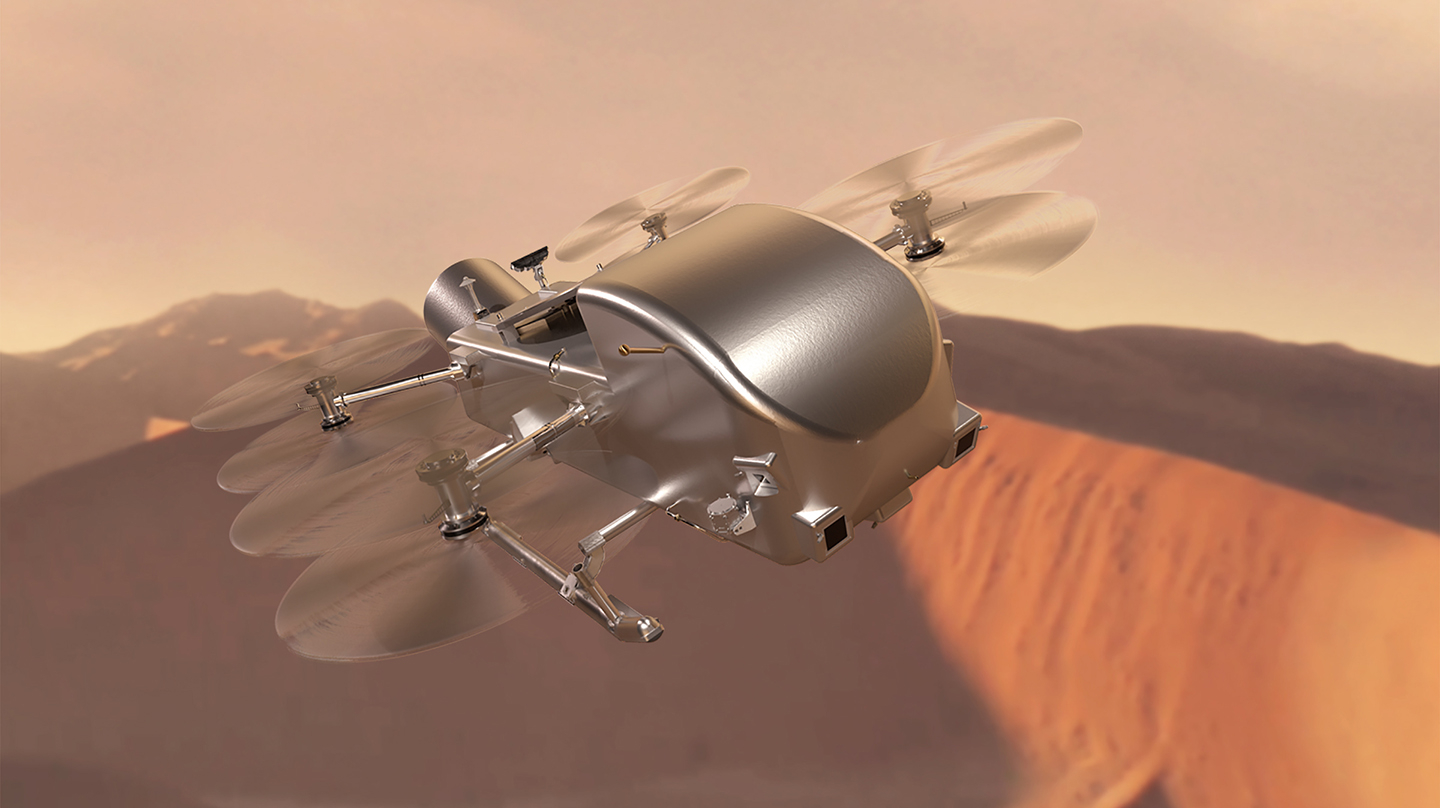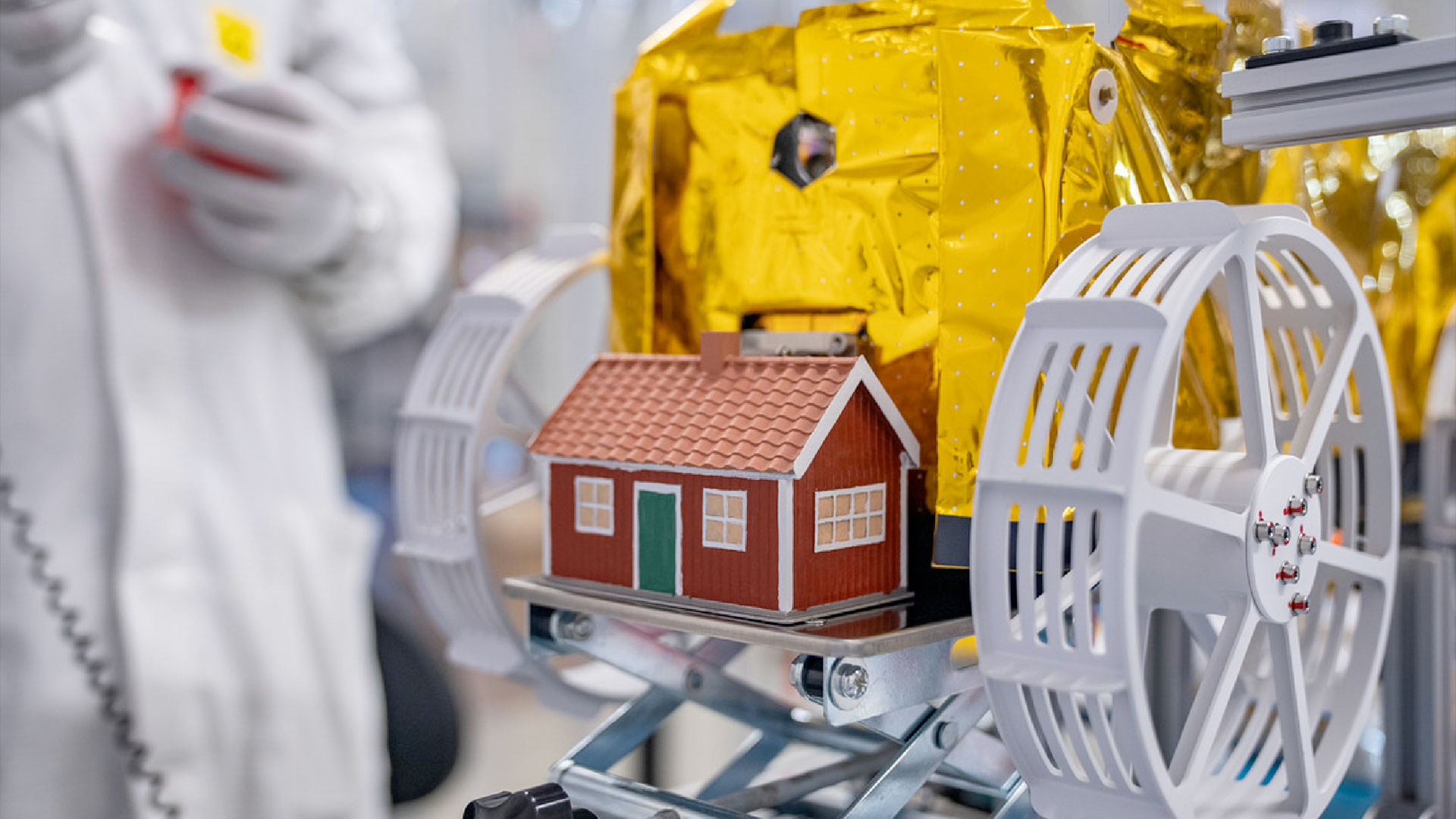NASA's Dragonfly nuclear-powered helicopter clears key hurdle ahead of 2028 launch toward huge Saturn moon Titan
"Passing this mission milestone means that Dragonfly's mission design, fabrication, integration and test plans are all approved, and the mission can now turn its attention to the construction of the spacecraft itself."

NASA's pioneering Dragonfly mission has cleared a key hurdle, keeping it on track for a 2028 launch to Saturn's huge moon Titan.
Dragonfly, a car-sized, nuclear-powered rotorcraft designed to investigate Titan's potential to host life, passed its Critical Design Review, NASA announced on Thursday (April 24).
"Passing this mission milestone means that Dragonfly's mission design, fabrication, integration and test plans are all approved, and the mission can now turn its attention to the construction of the spacecraft itself," a NASA statement reads.
The $3.35 billion Dragonfly mission was first selected by NASA in 2019 and is being designed and built under the direction of the Johns Hopkins Applied Physics Laboratory (APL) in Maryland, with APL's Elizabeth Turtle as the principal investigator.
The mission has been hit by delays and cost overruns, but studying Titan is considered a high priority by scientists for its potential to harbor alien life.
The mission is set to launch no earlier than July 2028 on a SpaceX Falcon Heavy rocket from NASA's Kennedy Space Center in Florida. The spacecraft will then embark on an almost seven-year-long voyage through deep space to the Saturn system, with the goal of spending more than three years studying areas across Titan's frigid and diverse surface.
Equipped with cameras, sensors and samplers, Dragonfly will assess Titan's habitability, looking out for prebiotic chemistry as well as potential signs of life.
Get the Space.com Newsletter
Breaking space news, the latest updates on rocket launches, skywatching events and more!
Related: NASA greenlights 2028 launch for epic Dragonfly mission to Saturn's huge moon Titan
Titan is Saturn's largest moon, and the second largest in the solar system behind Ganymede of Jupiter. Its thick, hazy atmosphere shrouds a surface featuring dunes of hydrocarbons and methane lakes. Beneath the moon's icy crust, scientists think there's a subsurface ocean of salty water, adding to the possibilities for Titan to harbor life.
In 2005, NASA's Cassini mission delivered the Huygens probe to Titan. The European Space Agency-built Huygens made a parachute-assisted landing, which provided profound insights into the giant moon. Dragonfly, if successful, could revolutionize our understanding of how life might arise elsewhere in the solar system.
Join our Space Forums to keep talking space on the latest missions, night sky and more! And if you have a news tip, correction or comment, let us know at: community@space.com.

Andrew is a freelance space journalist with a focus on reporting on China's rapidly growing space sector. He began writing for Space.com in 2019 and writes for SpaceNews, IEEE Spectrum, National Geographic, Sky & Telescope, New Scientist and others. Andrew first caught the space bug when, as a youngster, he saw Voyager images of other worlds in our solar system for the first time. Away from space, Andrew enjoys trail running in the forests of Finland. You can follow him on Twitter @AJ_FI.
You must confirm your public display name before commenting
Please logout and then login again, you will then be prompted to enter your display name.
